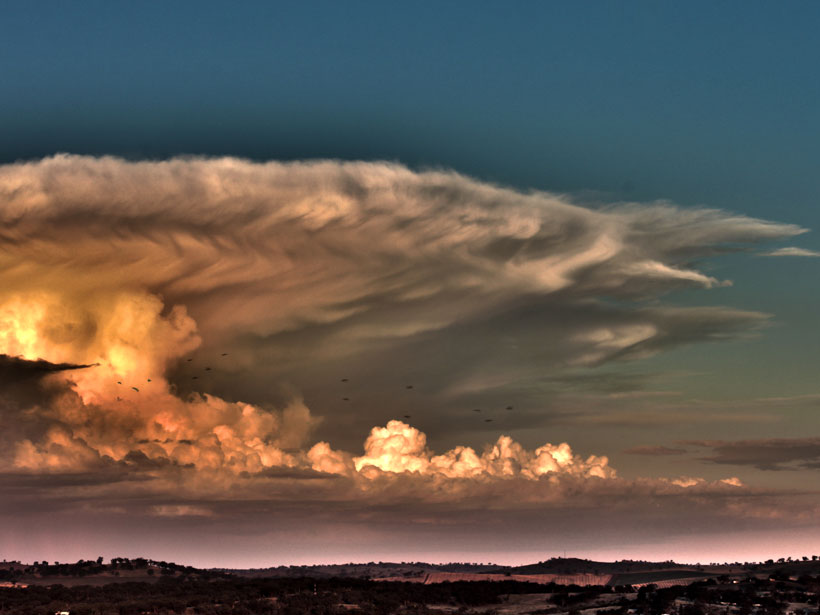Scientists watched Earth’s upper atmosphere intently as the Sun went quiet during the recent solar minimum, which lasted from 2007 to 2010. At that time, spacecraft saw temperatures and densities decline in our planet’s thermosphere as a result of the shift in the Sun’s activity. Simultaneously, however, deep convection—caused by solar heating near Earth’s surface—remained similar to levels seen during the prior solar maximum.
Vadas et al. looked at the influence of gravity waves—created by disturbing a stable fluid or gas—which scientists widely suspect can transport energy and momentum across layers of Earth’s atmosphere. The team started by identifying deep convective objects such as plumes of air that travel to high altitudes in the lower stratosphere and then modeled the gravity waves they create. The study used almost 2 weeks’ worth of data, which was collected by a handful of weather satellites during a period of low sunspot activity in the summer of 2009, as well as a corresponding period 9 years earlier during solar maximum.
The researchers used a model that showed how the gravity waves are created and used another model that traced the paths of the gravity waves to the thermosphere, where they dissipate. The researchers then used a third model to show how these waves created global responses in Earth’s thermosphere and ionosphere.
The dissipating gravity waves disturbed both the winds and temperature hundreds of kilometers above Earth’s surface on a global scale. The researchers add that this is the first study to look at the global impacts on the dynamics of the upper atmosphere as a result of this deep convection. (Journal of Geophysical Research: Space Physics, doi:10.1002/2014JA020280)
—Eric Betz, Freelance Writer
Citation: Betz, E. (2015), Gravity waves drive global changes in Earth’s upper atmosphere, Eos, 96, doi:10.1029/2015EO026215. Published on 13 March 2015.
Text © 2015. The authors. CC BY-NC 3.0
Except where otherwise noted, images are subject to copyright. Any reuse without express permission from the copyright owner is prohibited.

